Smiley Piercing
Piercing is one of the most common forms of artistic body modification after tattoos.
And more and more popular recently there is a kind of piercing called «Smiley». It’s not a classic kind of piercing where you puncture the upper lip to the gum. Such piercing is noticeable only when a person smiles. It is for this reason that it got its name.

What is the advantage and disadvantages of a smiley piercing?
It should be noted that even if you really like this kind of puncture, it does not mean that you can do it.
There are a number of contraindications for such piercing, for example:
- You wear braces;
- Have any gum diseases;
- If you have an infectious oral pathology;
- If you have a small size of a frenulum that does not allow you to place a decoration on it.
It is also always worth remembering the importance of proper aftercare for such decoration.
If you neglect hygiene, there is a high probability of infection and inflammatory diseases of the maxillofacial system.
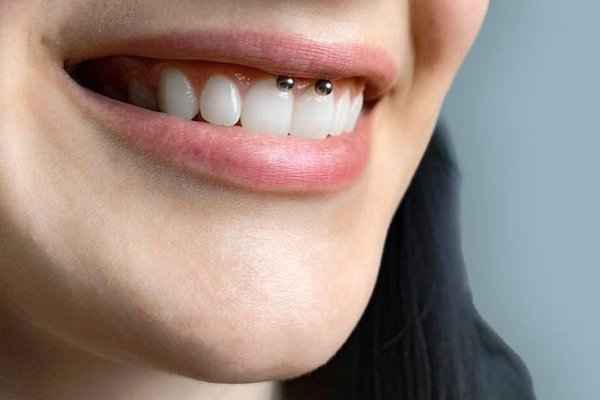
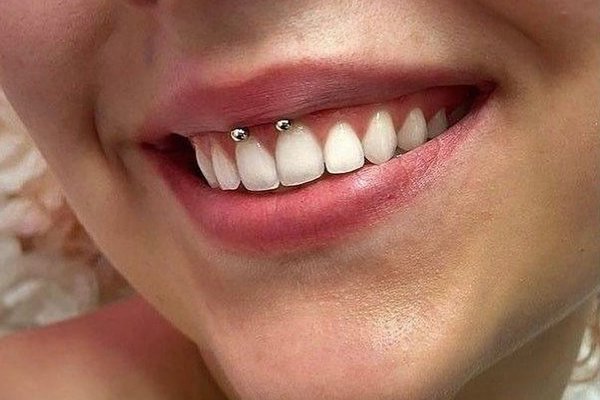
Of the obvious advantages you get with such a puncture:
- Creates an accent and emphasizes your smile making it even more beautiful;
- Unusual and, at the same time, very aesthetic appearance;
- Piercing is not visible in the normal expression of the face;
- Easy to replace decorations.
If you work in an office with a dress code and there is a need to hide piercing, then you may prefer minimalist decorations that are not so visible. Also be sure to take off piercings at trainings for contact sports.
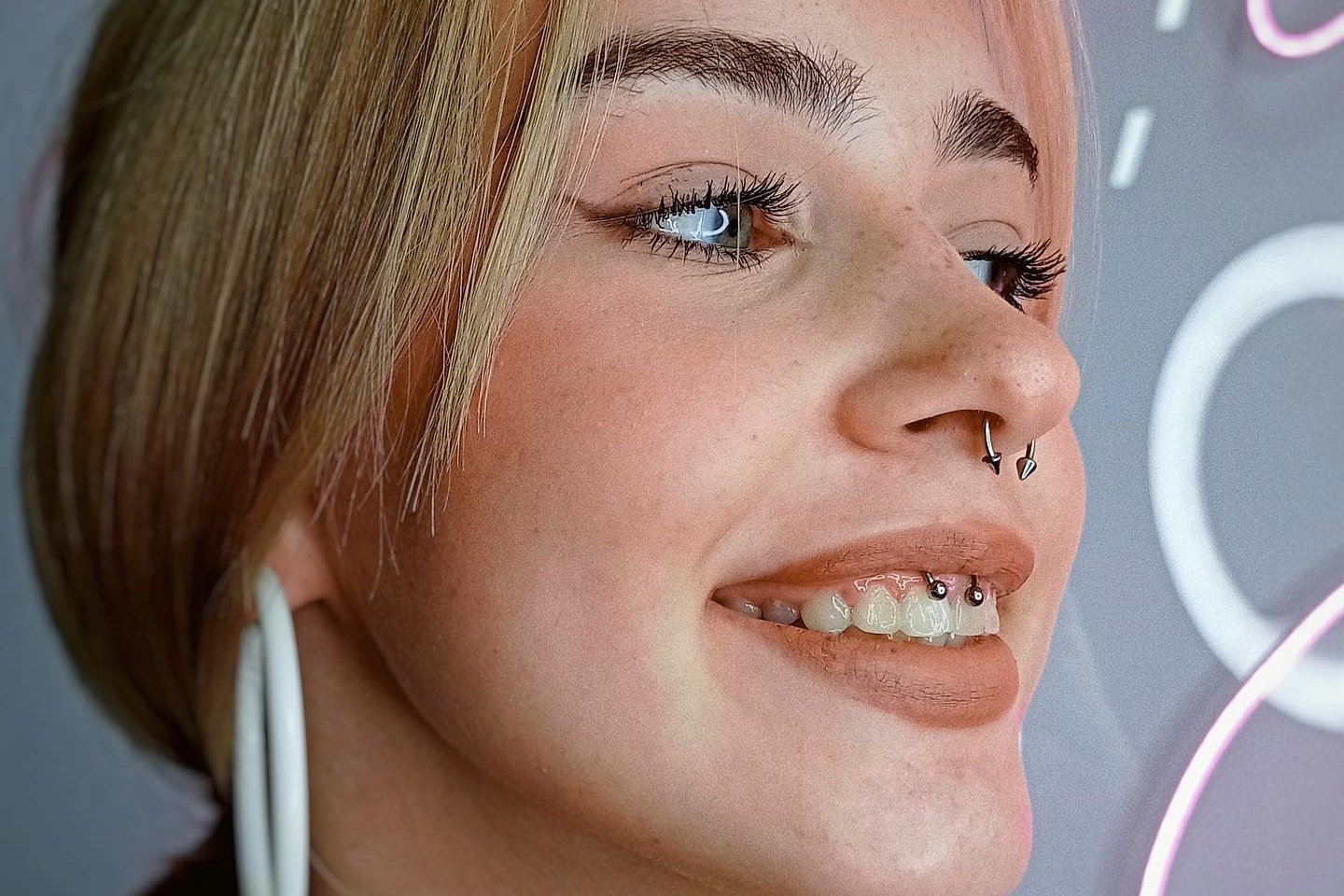
Which jewelry to choose?
The most popular types of decorations at the puncture «smiley» include:
- Classic rings without decoration;
- Rings with beads, artificial stones and other decorative elements mounted on them;
- Horseshoe barbell.
Most often, people choose products made of hypoallergenic materials for this type of piercing - gold, titanium and medical alloy. High-quality jewelry accelerates healing and prevents complications after a puncture.
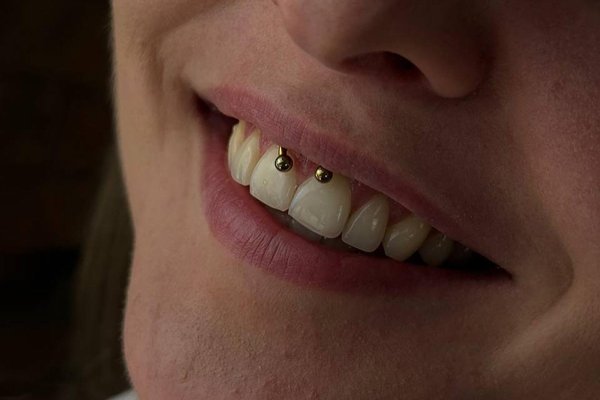

How are smiley piercings done?
Usually this is a fast procedure that takes 10-15 minutes.
The procedure is as follows:
- Anesthesia (if it is necessary);
- Antiseptic treatment of the skin area for puncture and tool;
- The master stretches the bridle and makes a puncture with a sterile needle;
- Placement and fixing of the jewelry.
During a puncture you may experience pain for only a few seconds.
Complete healing takes 1 to 4 months. It all depends on the features of your body.

Aftercare
The main thing in the process of aftercare is to keep the oral cavity clean.
It is also important to carefully brush your teeth so as not to touch the jewelry during the healing period.
The standard recommendations of aftercare include:
- Eliminate the usge of aggressive toothpastes;
- Use antibacterial, alcohol-free rinse after eating;
- The next 3-5 days is advisable to minimize conversations;
- Eliminate unnecessary touching of the puncture site by both the tongue and the hands;
- Remove harmful habits such as smoking and alcohol during the healing period;
- No solid food during the healing period;
- No chewing gums and do not drink through the straw;
- No hard and spicy products;
- No kisses.

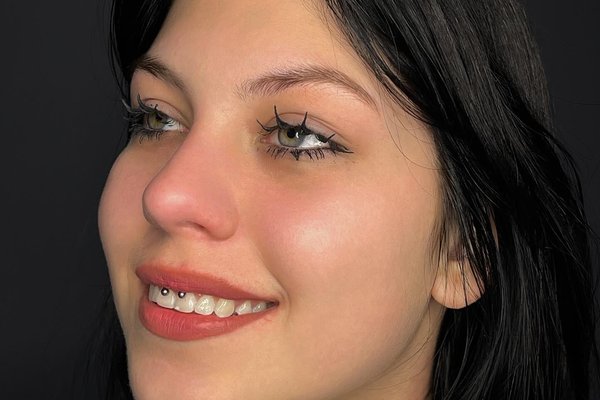
Attention! Important symptoms when you should contact a master or doctor:
- Severe edema;
- Redness at the puncture site;
- Continuous bleeding;
- Severe itching;
- Excretion of pus or other liquids;
- An unpleasant smell.

How to choose a master?
With a difficult puncture, and smiley is a difficult one, it is important to choose an experienced and highly qualified master.
Otherwise, you can get:
- Rejection of the decoration;
- Infection;
- Damage to tooth enamel or mucous membrane of lips and gums.
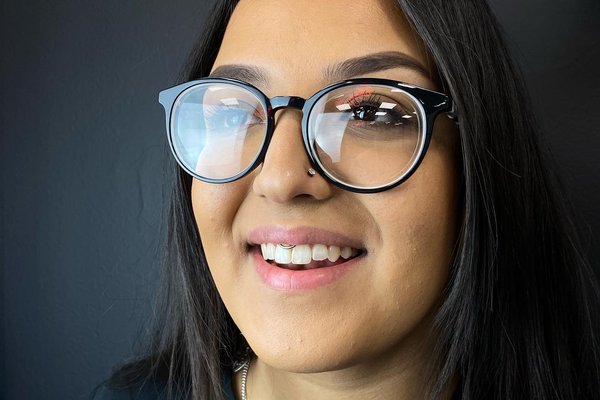



 Make a sketch in the AI VEAN TATTOO generator
Make a sketch in the AI VEAN TATTOO generator




